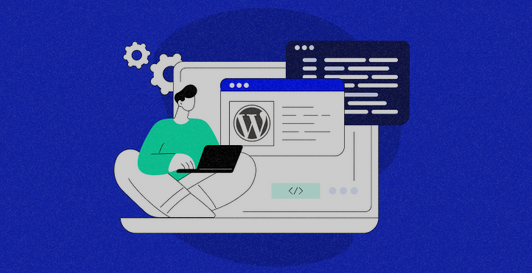Efficient performance is a vital aspect of any WordPress website, and this extends beyond what visitors see on the frontend. Optimizing the backend, where you manage your site’s content and settings, can significantly impact speed, responsiveness, and overall user experience. One of the most effective techniques for achieving this is caching. In this article, we’ll explore the importance of caching for the WordPress backend and techniques for optimizing performance.
Understanding the WordPress Backend
The WordPress backend, often referred to as the admin dashboard, is where site administrators, editors, and authors manage content, configure settings, and perform various administrative tasks. It includes activities like creating and editing posts, managing plugins and themes, and configuring site options.
The Need for Backend Performance Optimization
Efficient backend performance is essential for several reasons
- Productivity: A slow backend can frustrate users responsible for content creation and management, reducing productivity and creating a poor user experience.
- SEO Impact: Google considers site speed when ranking websites. Slow backend performance can negatively affect your site’s search engine rankings.
- User Experience: Backend slowness can also impact user experience. When users perform actions on your site, such as submitting forms or making purchases, a sluggish backend can lead to frustration.
Caching: The Key to Backend Optimization
Caching is a technique that stores frequently accessed data or processes so that they can be quickly retrieved when needed. In the context of WordPress caching, it primarily focuses on optimizing the frontend for visitors. However, caching can also significantly improve backend performance. Here’s how:
- Object Caching: WordPress employs object caching to store database queries and other data in memory, reducing the need to repeatedly fetch this data from the database. This is crucial for both frontend and backend performance.
- Page Caching: Backend pages, including the admin dashboard, can be cached to minimize server resource usage and speed up page loading.
Read: Slow WordPress Websites: Exploring Factors And Solutions
Techniques for Backend Caching and Performance Optimization
Use popular caching plugins like W3 Total Cache and WP Super Cache offer options to configure object caching for both the frontend and backend. Enable these settings to speed up backend operations.
- Object Cache Plugins: Consider using dedicated object caching plugins such as Redis or Memcached. These plugins can significantly improve database query performance, benefiting both the frontend and backend.
- Database Optimization: Regularly optimize your WordPress database by removing unnecessary data, reducing the database’s size, and improving query performance.
- Image Optimization: When adding media to your site via the backend, ensure images are appropriately optimized to prevent excessive resource consumption.
- Server Resources: Ensure your server has ample resources to handle backend operations efficiently. A robust server can help reduce latency and speed up data retrieval.
- Regular Updates: Keep WordPress, plugins, and themes up to date. Developers often release updates to improve performance and security.
- Monitor Resource Usage: Use server monitoring tools to track resource usage. This helps identify resource-intensive plugins or operations that may be slowing down the backend.
- Plugin Management: Periodically audit and optimize the plugins you use in the backend. Deactivate or remove unnecessary or resource-intensive plugins.
- User Role Restrictions: Restrict the capabilities of lower-level user roles. This minimizes server load and speeds up backend performance for users with limited access.
Read: Google’s PageSpeed Insights: Optimizing Website Performance
Security Considerations
While optimizing the backend, it’s essential to maintain security:
- Regular Backups: Perform regular backups to ensure data safety in case anything goes wrong during optimization.
- Plugin Authenticity: Only install and activate reputable plugins from trusted sources to avoid potential security risks.
- Access Control: Implement strict access controls and user role restrictions to prevent unauthorized access to the backend.
Read: Common Website Security Mistakes To Avoid
Conclusion
Caching and performance optimization for the WordPress backend are often overlooked but essential aspects of maintaining a high-performing website. By implementing caching techniques, optimizing your server, and being mindful of the plugins and themes you use, you can significantly enhance the efficiency and responsiveness of your site’s backend. This not only improves productivity but also contributes to a positive user experience for those managing the website.

